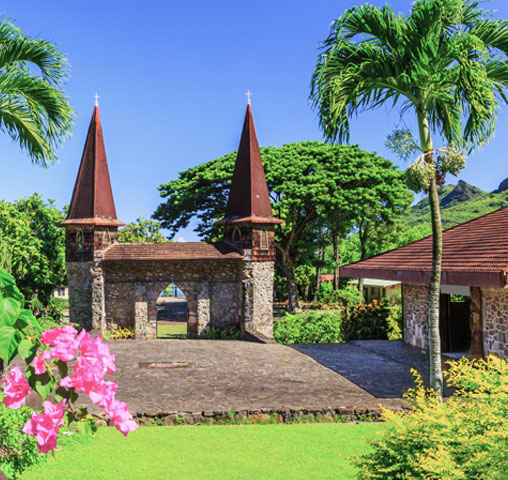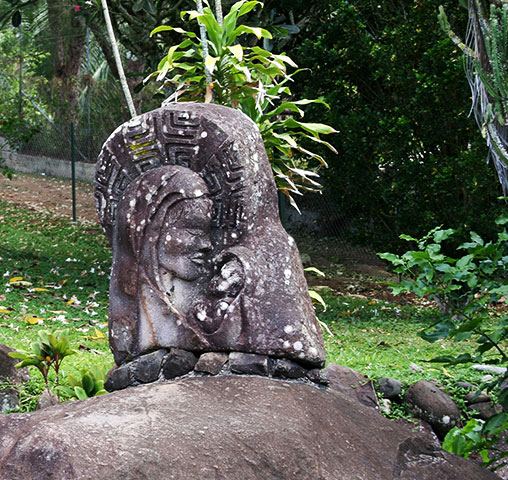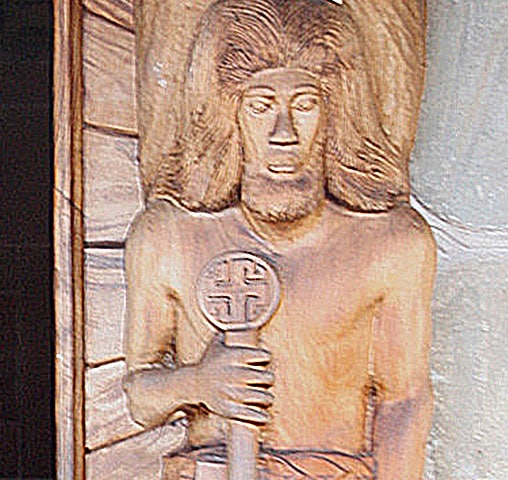Tahitian Spirituality
If you’re planning to spend a weekend in the South Seas, you’ll notice what a beautiful mix of culture and religion befalls Sunday morning. Throughout the picturesque island towns you’ll find women wearing their most extravagant rito (woven pandanu hats) and donning dresses in brilliant, sun-saturated prints, ready to attend services. With a rich history full of divinities, today’s religious beliefs mix ancient deities with various denominations of Christianity. A deep sense of spirituality runs through French Polynesia and it’s one of the many things that makes visiting so magical.
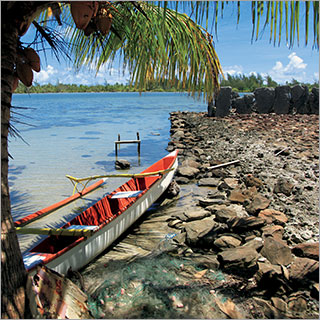
Ancient Temples — Huahine
Ancient voyagers would spend months at sea in an outrigger canoe. After finally spotting land and dragging their canoe to shore they were compelled to thank the gods for their successful voyage, often building an open- air temple called a marae. On the isle of Huahine, many of these ancient temples still exist today, hidden within the island’s lush vegetation. Maraes had different functions. Some were designated as the place for celebrating births and deaths. Larger temples served as the site for community meetings between village chiefs and for larger religious rites. There were even special royal marae for chieftains from surrounding islands states to visit and pledge allegiance to a king.
The Sacred Isle - Raiatea
2024 features a return to Raiatea, the sacred homeland of the Maohi people and the UNESCO-listed Marae Taputaputea archaeological site—the symbol of Polynesian heritage. In the very heart of the “Polynesian triangle” (spanning from Hawaii to Easter Island and New Zealand), this most sacred of all French Polynesia’s ancient treasures was revered as the home of the gods such as Ta’aroa (the supreme creator), and ‘Oro (the god of life and death). Legend holds that ‘Oro’s descendant Hiro built the marae and it was from here that the voyaging network set out to spread the word of ‘Oro.
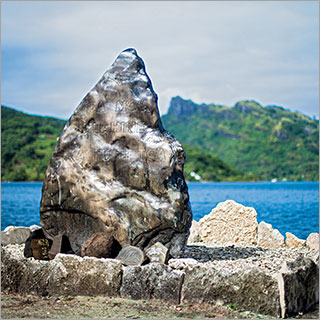
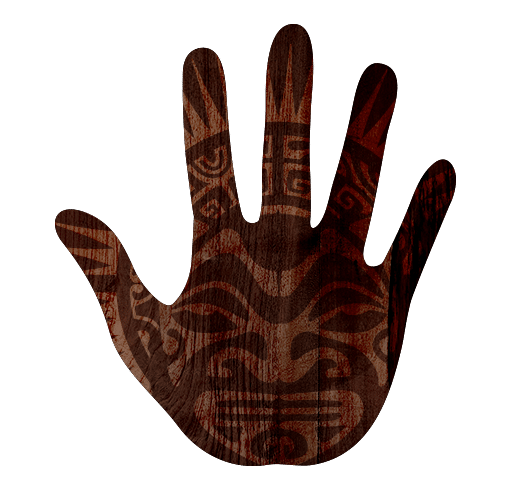
Mind Your Mana — Some Things Are Tapu
Central to ancient Polynesian philosophy was the idea that everything in nature was imbued with a supernatural power called mana. Arbitrarily dispensed by the gods, those who received large amounts of it were considered particularly blessed. Warrior chiefs had it, sacred meeting grounds had it. The tribe then received mana through the power of association. It took serious work to get and keep mana. So much importance was placed on the attainment and holding of its power that societal taboos called tapu were set in place to prevent the dissolution of the energy. If you violated a taboo your tribe could punish you. If you escaped the vengeance of your peers, catastrophe or illness sent directly by the gods would befall you.
Colonization & Christianity
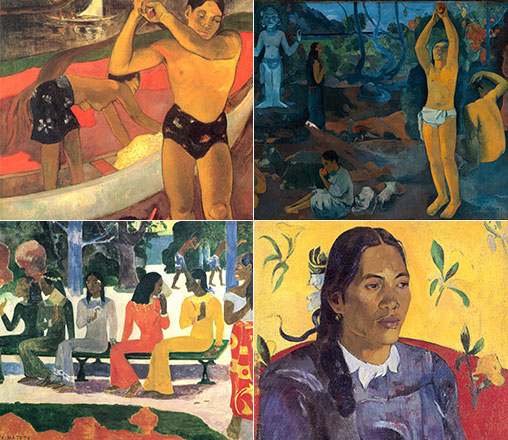
Taming the ‘noble savage’ was foremost on European settlers’ minds as they started to colonize Polynesia in the late 1700s. When French, Spanish, and British missionaries arrived in Oceania they were shocked by the open and carefree lifestyle of the natives. The sensual song and dance, lack of clothing, and casual attitudes toward intimacy, all played havoc with the puritanical mind. Converting the Polynesians to Christianity meant putting the kibosh on tattoos, native song, dance, and polytheistic gods. The newly minted Christians even adopted a European style of dress.
The radical change in Polynesian culture came with a heavy price. The history of ancient Polynesia, which was passed from one generation to the next through the art of storytelling, all but disappeared from the culture. Gone for a hundred years were the art, song, dance, and tattoos that expressed the islanders’ identities. Today ancient traditions have been restored and Christianity walks side-by-side with traditional Polynesian culture.
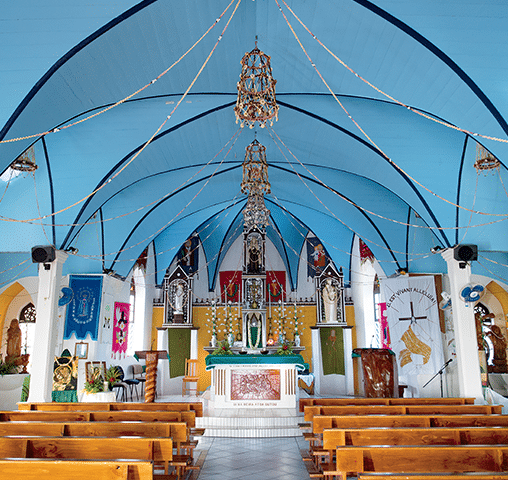
Modern Day Religion
One legacy of the French and Spanish settlers is that 84 percent of Polynesia’s population identifies as Christian. Protestantism, followed closely by Catholicism, make up the majority of the islands’ religious population—followed next by the members of The Church of Latter Day Saints. Sunday is the primary day of worship, and services are celebrated with colorful dress, fashionable hats, and choirs of beautiful music. Most Protestant services are conducted in Tahitian, and Catholic Mass is spoken in French.
Aumakua: Personal Deities
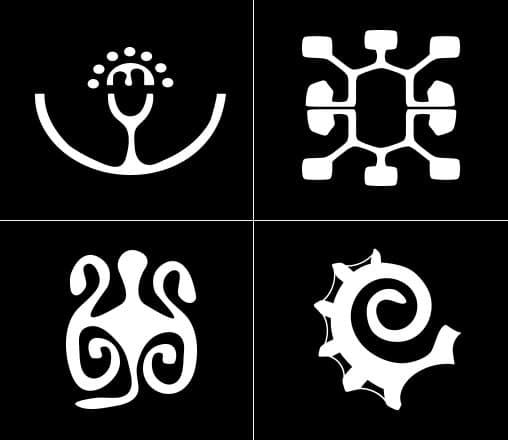
Polynesians have a direct line to spiritual guidance whenever they need it. They call on a personal god, an aumakua, who acts as a healer, spirit guide, and someone that will warn when danger is near. Polynesians believe them to be deceased relatives who have the ability to shape shift as needed. These deities can take on the form of an animal, a human, or even a place. Lore suggests that family members can always recognize their ancestors, no matter what form the aumakua takes.
A Beautiful Blend
Imported stone, hand carved rosewood, and sacred ground make for an unorthodox but captivating cathedral. Notre Dame de Taiohae was established on Nuku Hiva during the 1800’s, on sacred Maohi land. The Catholic Church was recently rebuilt with stones transported from the six inhabited islands of the Marquesas. Tiki-like statues of Saint Peter and Saint Paul, carved from rosewood, flank the front doors of the cathedral. Notre Dame de Taiohae is the perfect marriage of traditional Maohi artistry, with the modern adoption of Catholic Christianity.
